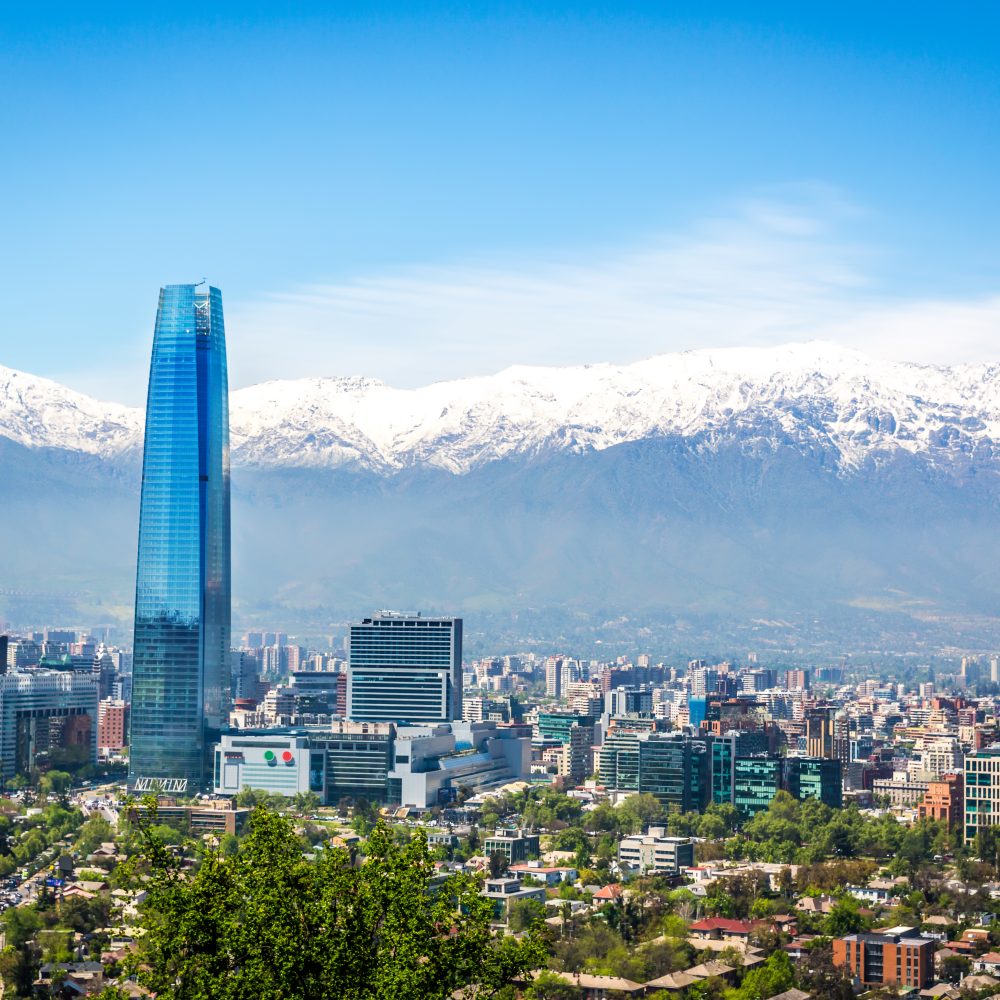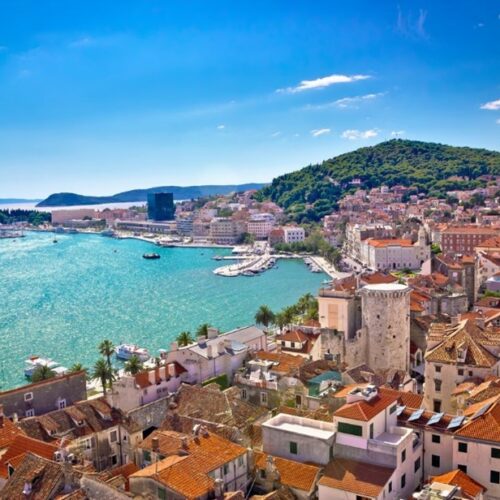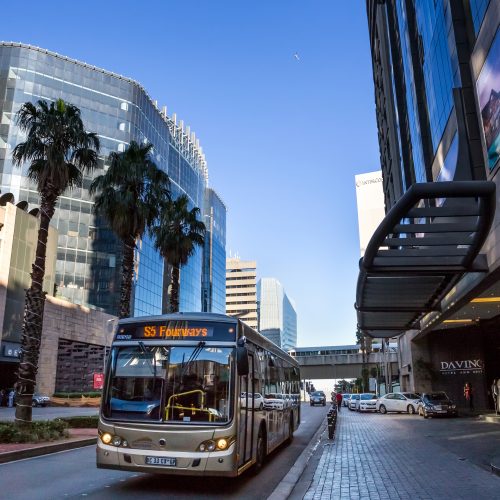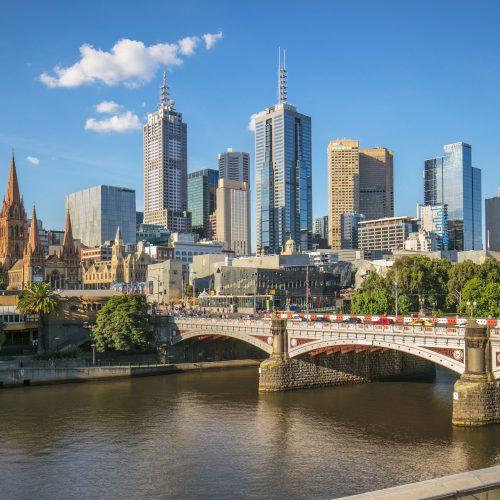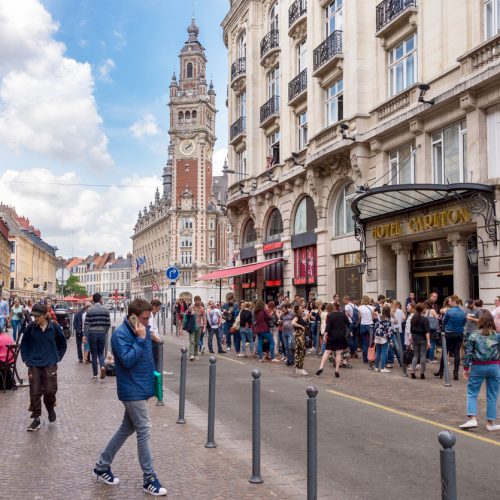Context and policy overview
In 1990, following 17 years of military dictatorship in Chile, Jaime Ravinet took over as mayor of the capital, Santiago de Chile, with the aim of revitalising the city’s municipal district and attracting more middle-income residents.[1]
In the preceding decades, Santiago had suffered substantial urban deterioration, experiencing a population decrease of 50 per cent from 1952 levels. In addition, the earthquake that struck the city in 1985 had caused significant damage to buildings and other critical infrastructure that had yet to be repaired.
Crucially, in the 1990s, the city was still struggling with high levels of income inequality. Despite Chile’s average economic growth rate of 7.8 per cent from 1990 to 1998 and a significant increase in social spending, inequality rates remained high.[2]
In response, Mayor Ravinet developed a “Plan for the Renovation of Santiago”, which aimed to tackle three main issues: the lack of private investment in housing; insufficient public investment in the physical infrastructure of the neglected city centre; and the negative perception of Santiago’s city centre.
The city’s neglect had sparked an exodus by middle-income residents, leaving low-income residents to inhabit an area plagued by a lack of commercial dynamism and high crime rates.[3]
The goals and priority areas of the programme were determined through a participatory forum, as part of a “Municipality and Participation” strategy. More than 16,000 Santiago residents voiced their opinions during the strategic consultations, stressing the need to call a halt to the exodus from the city.
Based on these consultations, the city identified three priority areas:
- enhancing Santiago’s historical character
- creating an enabling environment for commercial activity
- increasing investment in projects aimed at improving residents’ quality of life (including parks, public transport and security).
The ultimate goal of the plan was to attract 100,000 new residents to the Santiago municipal district by 2005 by creating more residential spaces and better amenities. With new developments designed for mixed-use, the city hoped the influx of residents would boost opportunities for commercial activity.
Implementation
The Santiago Development Corporation (SDC), an agency created in 1985 to foster economic and urban development, was given responsibility for carrying out the renovation plan.
The SDC oversaw the creation of two distinct programmes: the Santiago Repopulation Program (SRP) and the Housing Rehabilitation Program (REHA). While the SRP sought to mobilise public-private partnerships to stimulate the housing market, the REHA’s objective was to reconstruct 7,500 housing units.[4] Many new housing developments were designed to be mixed-use.
Importantly, prior to rolling out the programme in full, the SDC and the Mayor recognised that the scale of the proposed repopulation programme far outweighed the financial and administrative capabilities of the municipal government. They, therefore, went about creating an incentive structure aimed at getting private actors involved. This included:
- updating the city’s cadastre to provide private developers with a more accurate picture of the city’s development potential, including commercial space
- generating more demand for housing by rolling out a subsidy programme for middle-income buyers in tandem with the Ministry of Housing and Urban Development
- creating a list of pre-approved buyers to demonstrate clear demand for housing
- formalising partnerships with private developers through official “repopulation agreements”.
The subsidy scheme, called the Subsidy for Urban Renovation (SUR), was built on an existing national subsidy programme and played a major role in attracting potential buyers and, accordingly, developers to the area.
It comprised a fixed amount, equivalent to 10 per cent of the average cost of new housing, payable to buyers who acquired property within a predefined period in the inner-city zone.[5] The SUR differed from the national subsidy in that it was allocated based on geographical rather than income criteria.[6]
The plan was carried out in three stages:
- Initiation (1990-95): The SDC ran a pilot project, compiled a list of pre-approved housing buyers and worked on creating housing subsidies.
- Consolidation (1996-02): The SDC, City Hall and private developers signed a repopulation agreement to coordinate their roles in the programme. Subsidies were approved and a communications campaign was launched to change perceptions of the city’s potential as a residential area.
- Expansion (2003-10): As the housing market in the city began to flourish, the SDC took a step back. Demand continued to increase and new developers entered the housing market.
Barriers and critical success factors
The scale of the repopulation programme posed a significant challenge for the municipal government in terms of administrative and financial capabilities. Having recognised this obstacle early on in the process, the SDC was able to mobilise investment from the private sector by creating incentives for private developers to get involved in land development, for example, subsidies and leaner regulation.[7]
However, more lenient regulation meant that real-estate developers did not necessarily carry out projects with aesthetic considerations in mind. These days, the high-rises developed through the SRP are criticised for their poor quality and lack of aesthetic alignment with the city’s traditional character.
Similarly, as the housing market matured and more upper-middle-income residents became interested in the newly-developed residential areas, the SRP faced criticism for causing its gentrification. Wealthier residents moved to the neighbourhood, dramatically changing its character and making it harder for old, often low-income residents to remain in the area.[8]
By attracting more high-income residents, the programme largely fulfilled its goal of repopulating the centre. However, more robust provisions to support low-income residents should have been embedded into the programme to prevent marginalising gentrification.
Results and lessons learned
The SRP was ultimately successful in attracting new residents to the city centre. Between 2002 and 2012, the city centre’s population increased 55 per cent. Under the auspices of the SRP, 646 development projects were completed and the housing stock doubled. The population increase also had a positive impact on Santiago’s budgetary outlook, as municipal revenues increased 55 per cent between 2001 and 2013.
Initially, the SDC and private developers developed real-estate projects through public-private partnerships. However, when the housing market became more mature, real-estate developers started to operate more autonomously. As the developers continued to take advantage of the leaner regulatory framework, they faced pushbacks from residents for having altered the historical character of the city.
In fact, neighbourhood associations engaged with the Mayor’s office and the SDC, advocating for the preservation of the city’s historical features, and they were able to push for the introduction of a height cap on new developments.[9]
At the same time, while the subsidy scheme was meant to attract middle-income residents, the redevelopment also attracted upper-middle-income residents, subjecting the project to criticism for fostering gentrification. Indeed, as upper-middle-income residents moved in, fewer low- and lower-middle-income residents could afford to live in the city centre.
As of 2016, the housing stock for low-income residents in central Santiago had decreased by 50 per cent.[10] Numerous older residents were displaced. These issues are ongoing, so City Hall has intermittently frozen building permits and put a height cap on new developments.
While ultimately successful in achieving its original goal of attracting new residents to Santiago, the SRP would have benefitted from greater attention to inclusion and a stronger focus on medium- and long-term urban planning. Significant lessons can be drawn from the case of Santiago, therefore, to inform the work of decision-makers:
- Catalysing support from the private sector and working with private developers is essential to the success of resource-intensive endeavours, such as real-estate development. Consequently, analysing and, if necessary, modifying the incentive structure to appeal to private-sector actors is essential to ensuring the success of the project.
- A considerable degree of municipal oversight is necessary to ensure that the developments carried out by developers comply with the aesthetic and quality standards of the city.
- Urban regeneration programmes can lead to gentrification. To avoid this, it is essential to engage with current residents to ensure their needs are met and to create incentives and opportunities for both low- and middle-income residents to reside in the area.
- A participatory approach to decision-making can be instrumental in identifying challenges faced by citizens. In this case, a participatory forum was essential in order to prioritise the investment areas that needed to be bolstered most to appeal to new residents.








